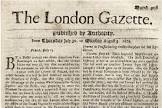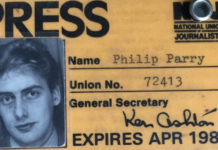- Restricted growth… - 8th December 2025
- Comedy of errors - 4th December 2025
- All in the mind - 3rd December 2025

Our Editor, Welshman Phil Parry, looks with incredulity at how the latest figures show the daily circulation of the newspaper where he began his long journalistic career is now down to less than 3,200, while it was almost 100,000 when he started on it, yet UK papers remain strong.
I am shocked because newspapers are IMPORTANT!
They hold to account influential people and organisations, as well as playing a central role in our democratic society because they (should) name and shame people who are in court, giving details of what has happened.

When I started in journalism on the South Wales Echo (SWE) in 1983 it was the largest selling paper produced in the country, and there were dedicated reporters for the crown court, the magistrates court as well as for industrial tribunal hearings.
They did almost nothing else (although the ‘mags’ court reporter wrote a column looking back at past events, called ‘Echoes of the Echo’, and the crown court reporter did orchestral reviews), and to support them other reporters from the newsroom were regularly sent along for coverage of big cases too.
The picture now, however, is VERY different.

Those people have disappeared, it long ago lost its lead as the biggest-selling newspaper produced in Wales, and circulation is a fraction of what it was.
The SWE (founded in 1884) is now down to just 3,175, while for a cub reporter starting on it, I knew I was working on a paper selling every day almost 100,000 copies, so it had real weight.
 There has been a decline too in the circulation of UK papers, although it is nowhere near as dramatic.
There has been a decline too in the circulation of UK papers, although it is nowhere near as dramatic.
The Daily Mail (where I did shifts in the 80s), was bought by 673,578 people in December, 0.9 per cent higher than in November.


The biggest month-on-month decline was at Reach’s Scottish weekly tabloid the Sunday Mail, down 5 per cent to 42,044.
Free paper Metro kept its print distribution steady at 952,104.
Local newspapers have plunged down market to try and attract readers, although clearly this isn’t working, with websites meant to provide the answer (although there has been heavy criticism of those annoying ‘pop-ups’!), but this doesn’t explain why the SWE has apparently lost ground more than other Welsh newspapers, and why UK papers are still relatively strong.

Perhaps it is something to do with connecting to your audience. If I am reading a local paper I want to know what the new building is down the road (so I want regular planning updates), or why my neighbour has been taken away by the police (so I want full coverage of the courts).
It appears that the UK newspapers know their readers far better, and their much greater circulation, as well as longevity, are a testament to this.
 The London Gazette, for instance, has been going since 1776, while The Observer (currently the subject of a controversial take over bid) was first published in 1791, and is the world’s oldest Sunday newspaper.
The London Gazette, for instance, has been going since 1776, while The Observer (currently the subject of a controversial take over bid) was first published in 1791, and is the world’s oldest Sunday newspaper.
In 1829 £50 was offered as a reward by The London Gazette to identify the “evil-disposed person or persons unknown” who set fire to the pier at Llanddulas.

Perhaps local papers today need to follow their approach…
The memories of Phil’s astonishing, decades long award-winning career in journalism (starting on the biggest-selling paper produced in Wales) as he was gripped by the rare neurological disabling condition Hereditary Spastic Paraplegia (HSP), have been released in a major book ‘A Good Story’. Order it now.








